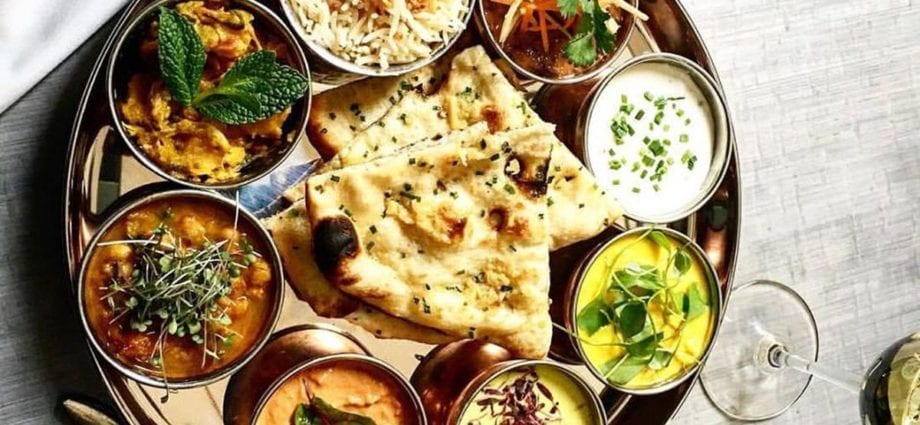Contents
To really get to know any country, you need, first of all, to study its cuisine in detail. Indian cuisine is famous for its sharpness: spices and herbs are not spared there. And the point is not only that food, thanks to them, acquires a special taste and incomparable aroma. Spices also disinfect food, which is important given the climate of this country.
Traditional foods that appear on Indian tables every day are rice and wheat, beans, chicken, and a variety of vegetables and fruits. For the followers of Hinduism, a cow is a sacred animal, so its meat is not eaten.
Indian housewives mainly use two methods of heat treatment of vegetables and meat: either fry or stew products for a long time in a large amount of vegetable oil and spices, or bake them in clay ovens called tandoori. The second option is considered festive, not everyday.
Hindus often use a banana leaf instead of dishes, but on special occasions food is served in metal bowls (katori) on a large tray called thali.
The word thali refers not only to the tray itself, but also to the entire set of dishes that are brought on it. Traditionally, rice, bean puree and curry must be present. Other components may differ from region to region.
The traditional Indian dish is masala. These are pieces of chicken that are fried in a curry and spice sauce.
Chapatis are baked instead of bread. These are flat cakes, the dough for which is made from coarse flour.
The ghee, called ghee, is sacred to the Indians.
Samasi pies in India are usually consumed with various hot sauces. Their filling can be very diverse.
Another chicken dish that is very popular in India is tandoori chicken. Before baking, the meat is marinated for a long time in yogurt and spices.
A dish made from soft cheese, spinach and cream is called palak paneer.
An analogue of the shawarma we are used to is masala dosa. This is a large pancake that is baked with various spicy fillings. It is also served with spicy sauces.
Another fried dish is malay kofta. Potatoes and paneer are deep-fried. It is customary to serve them on the table in a creamy sauce, sprinkled with herbs and hot spices.
Crispy puri balls with varied and, of course, spicy fillings are considered to be an easy snack.
It is also customary to add spices to tea drinks. For example, traditional masala tea contains tea itself, various spices and milk.
Nimbu pani with lime juice is popular among soft drinks.
One of the favorite sweets of the people of India is jalebi. These are spirals made from rice flour, sprinkled with various syrups.
Useful properties of Indian cuisine
Indian cuisine, despite the abundance of fatty and fried foods, is considered healthy. The secret is that each of those spices, with which even some sweets are so abundantly flavored, has its own healing effect. For example, cardamom is very good for the digestive system of the body, and cinnamon helps to get rid of dry coughs.
Dangerous properties of Indian dishes
The main danger that can lurk in Indian cuisine, if you decide to try them in India, is various bacteria that multiply very quickly in hot climates. However, the abundance of spices reduces the risk of contracting any infection. Also, people who have some problems with the stomach and digestive tract should be very careful about the amount of spices that are used to season dishes.
Based on materials Super Cool Pics










